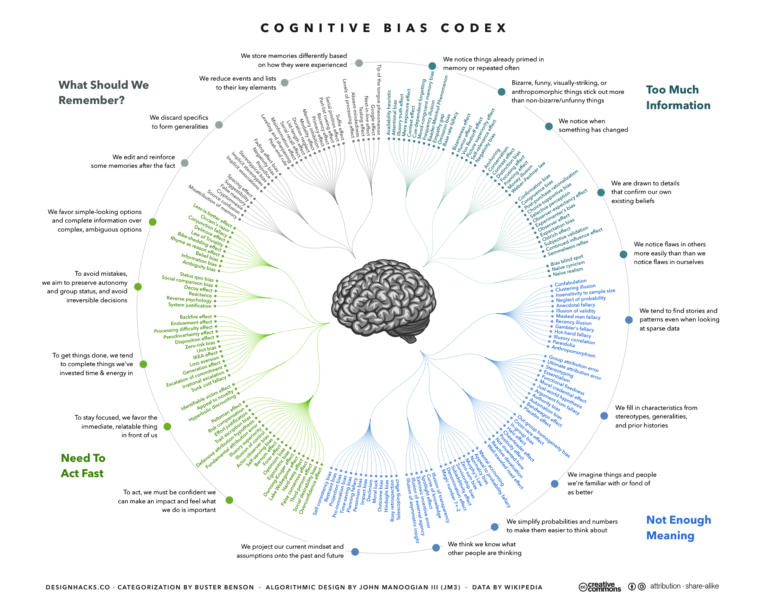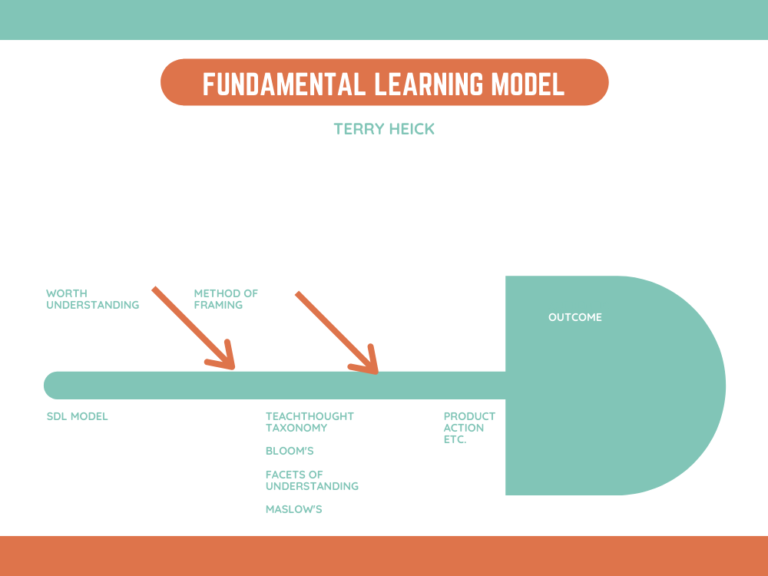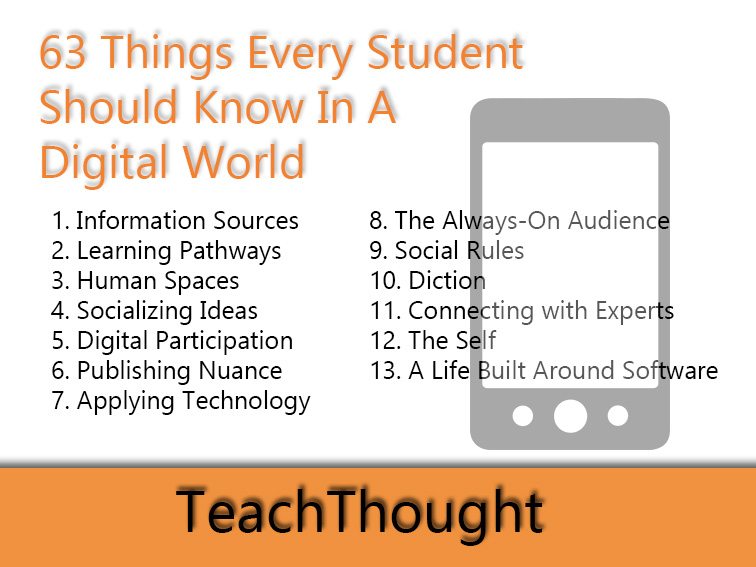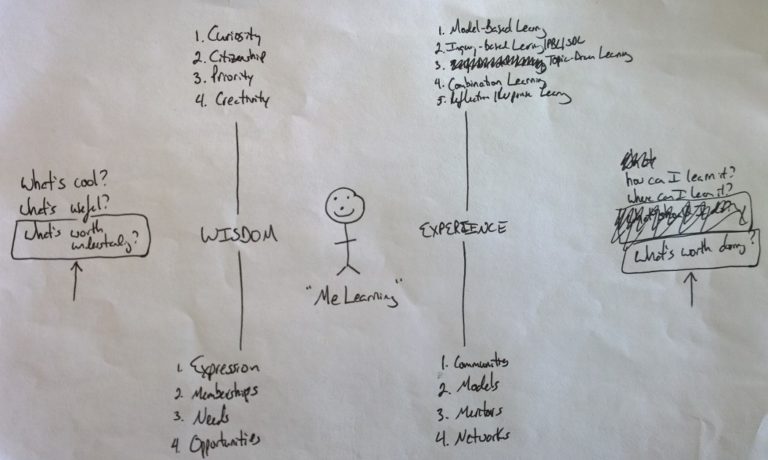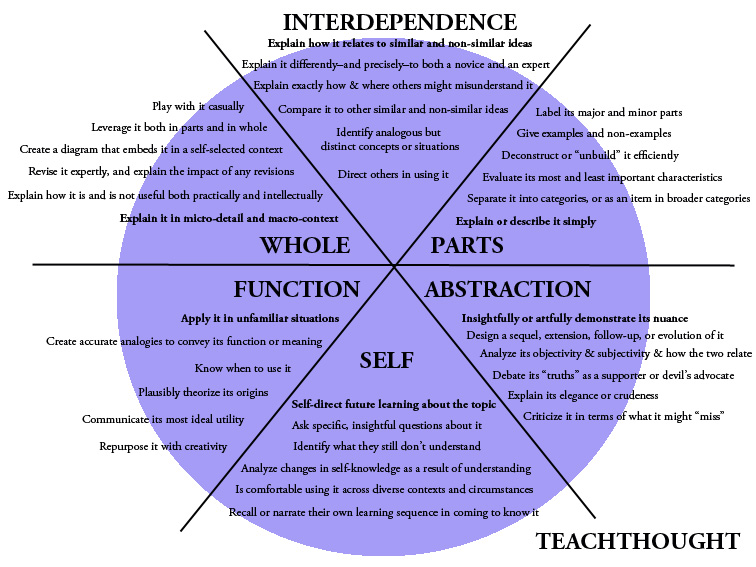Literary Terms and Devices
Allegory
A symbolic narrative in which the surface details imply a secondary meaning. Allegory often takes the form of a story in which the characters represent moral qualities. The most famous example in English is John Bunyan’s Pilgrim’s Progress, in which the name of the central character, Pilgrim, epitomizes the book’s allegorical nature. Kay Boyle’s story “Astronomer’s Wife” and Christina Rossetti’s poem “Up-Hill” both contain allegorical elements.
Alliteration
The repetition of consonant sounds, especially at the beginning of words. Example: “Fetched fresh, as I suppose, off some sweet wood.” Hopkins, “In the Valley of the Elwy.”
Antagonist
A character or force against which another character struggles. Creon is Antigone’s antagonist in Sophocles’ play Antigone; Teiresias is the antagonist of Oedipus in Sophocles’ Oedipus the King.
Anthropomorphism
Where animals or inanimate objects are portrayed in a story as people, such as by walking, talking, or being given arms, legs, facial features, human locomotion or other anthropoid form. (This technique is often incorrectly called personification.)
Assonance
The repetition of similar vowel sounds in a sentence or a line of poetry or prose, as in “I rose and told him of my woe.” Whitman’s “When I Heard the Learn’d Astronomer” contains assonantal “I’s” in the following lines: “How soon unaccountable I became tired and sick, / Till rising and gliding out I wander’d off by myself.”
Ballad
A narrative poem written in four-line stanzas, characterized by swift action and narrated in a direct style. The Anonymous medieval ballad, “Barbara Allan,” exemplifies the genre.
Character
An imaginary person that inhabits a literary work. Literary characters may be major or minor, static (unchanging) or dynamic (capable of change). In Shakespeare’s Othello, Desdemona is a major character, but one who is static, like the minor character Bianca. Othello is a major character who is dynamic, exhibiting an ability to change.
Characterization
The means by which writers present and reveal character. Although techniques of characterization are complex, writers typically reveal characters through their speech, dress, manner, and actions. Readers come to understand the character Miss Emily in Faulkner’s story “A Rose for Emily” through what she says, how she lives, and what she does.
Climax
The turning point of the action in the plot of a play or story. The climax represents the point of greatest tension in the work. The climax of John Updike’s “A&P,” for example, occurs when Sammy quits his job as a cashier.
Conflict
A struggle between opposing forces in a story or play, usually resolved by the end of the work. The conflict may occur within a character as well as between characters. Lady Gregory’s one-act play The Rising of the Moon exemplifies both types of conflict as the Policeman wrestles with his conscience in an inner conflict and confronts an antagonist in the person of the ballad singer.
Connotation
The associations called up by a word that goes beyond its dictionary meaning. Poets, especially, tend to use words rich in connotation. Dylan Thomas’s “Do Not Go Gentle into That Good Night” includes intensely connotative language, as in these lines: “Good men, the last wave by, crying how bright / Their frail deeds might have danced in a green bay, / Rage, rage against the dying of the light.”
Convention
A customary feature of a literary work, such as the use of a chorus in Greek tragedy, the inclusion of an explicit moral in a fable, or the use of a particular rhyme scheme in a villanelle. Literary conventions are defining features of particular literary genres, such as novel, short story, ballad, sonnet, and play.
Couplet
A pair of rhymed lines that may or may not constitute a separate stanza in a poem. Shakespeare’s sonnets end in rhymed couplets, as in “For thy sweet love remembered such wealth brings / That then I scorn to change my state with kings.”
Creative Non-Fiction
Denotation
The dictionary meaning of a word. Writers typically play off a word’s denotative meaning against its connotations, or suggested and implied associational implications. In the following lines from Peter Meinke’s “Advice to My Son” the references to flowers and fruit, bread and wine denote specific things, but also suggest something beyond the literal, dictionary meanings of the words:
To be specific, between the peony and rose
Plant squash and spinach, turnips and tomatoes;
Beauty is nectar and nectar, in a desert, saves–
…
and always serve bread with your wine.
But, son,
always serve wine.
Denouement
The resolution of the plot of a literary work. The denouement of Hamlet takes place after the catastrophe, with the stage littered with corpses. During the denouement Fortinbras makes an entrance and a speech, and Horatio speaks his sweet lines in praise of Hamlet.
Dialogue
The conversation of characters in a literary work. In fiction, dialogue is typically enclosed within quotation marks. In plays, characters’ speech is preceded by their names.
Diction
The selection of words in a literary work. A work’s diction forms one of its centrally important literary elements, as writers use words to convey action, reveal character, imply attitudes, identify themes, and suggest values. We can speak of the diction particular to a character, as in Iago’s and Desdemona’s very different ways of speaking in Othello. We can also refer to a poet’s diction as represented over the body of his or her work, as in Donne’s or Hughes’s diction.
Didactic (di-DAK-tik)
refers to literature or other types of art that are instructional or informative. In this sense The Bible is didactic because it offers guidance in moral, religious, and ethical matters. It tells stories of the lives of people that followed Christian teachings, and stories of people that decided to go against God and the consequences that they faced. The term “didactic” also refers to texts that are overburdened with instructive and factual information, sometimes to the detriment of a reader’s enjoyment. The opposite of “didactic” is “nondidactic.” If a writer is more concerned with artistic qualities and techniques than with conveying a message, then that piece of work is considered to be nondidactic, even if it is instructive. See Encyclopedia of Literature, Benet’s Readers Encyclopedia.
Elegy
A lyric poem that laments the dead. Robert Hayden’s “Those Winter Sundays” is elegiac in tone. A more explicitly identified elegy is W.H. Auden’s “In Memory of William Butler Yeats” and his “Funeral Blues.”
Epic
A long narrative poem that records the adventures of a hero. Epics typically chronicle the origins of a civilization and embody its central values. Examples from western literature include Homer’s Iliad and Odyssey, Virgil’s Aeneid, and Milton’s Paradise Lost.
Enjambment
A run-on line of poetry in which logical and grammatical sense carries over from one line into the next. An enjambed line differs from an end-stopped line in which the grammatical and logical sense is completed within the line. In the opening lines of Robert Browning’s “My Last Duchess,” for example, the first line is end-stopped and the second enjambed:
That’s my last Duchess painted on the wall,
Looking as if she were alive. I call
That piece a wonder, now….
Epic
A long narrative poem that records the adventures of a hero. Epics typically chronicle the origins of a civilization and embody its central values. Examples from western literature include Homer’s Iliad and Odyssey, Virgil’s Aeneid, and Milton’s Paradise Lost.
Epigram
A brief witty poem, often satirical. Alexander Pope’s “Epigram Engraved on the Collar of a Dog” exemplifies the genre:
I am his Highness’ dog at Kew;
Pray tell me, sir, whose dog are you?
Exposition
The first stage of a fictional or dramatic plot, in which necessary background information is provided. Ibsen’s A Doll’s House, for instance, begins with a conversation between the two central characters, a dialogue that fills the audience in on events that occurred before the action of the play begins, but which are important in the development of its plot.
Extended metaphor
A comparison between unlike things that serves as a unifying element throughout a series of sentences or a whole piece. An extended metaphor helps to describe a scene, an event, a character, or a feeling. See Controlling image, Metaphor
Fable
A short, simple story that teaches a lesson. A fable usually includes animals that talk and act like people. See Folktale, Traditional narrative
Fairy tale
A story written for, or told to, children that includes elements of magic and magical folk such as fairies, elves, or goblins. See Folktale, Traditional narrative
Falling action
In the plot of a story or play, the action following the climax of the work that moves it towards its denouement or resolution. The falling action of Othello begins after Othello realizes that Iago is responsible for plotting against him by spurring him on to murder his wife, Desdemona.
Fiction
An imagined story, whether in prose, poetry, or drama. Ibsen’s Nora is fictional, a “make-believe” character in a play, as are Hamlet and Othello. Characters like Robert Browning’s Duke and Duchess from his poem “My Last Duchess” are fictional as well, though they may be based on actual historical individuals. And, of course, characters in stories and novels are fictional, though they, too, may be based, in some way, on real people. The important thing to remember is that writers embellish and embroider and alter actual life when they use real life as the basis for their work. They fictionalize facts, and deviate from real-life situations as they “make things up.”
Figurative language
A form of language use in which writers and speakers convey something other than the literal meaning of their words. Examples include hyperbole or exaggeration, litotes or understatement, simile and metaphor, which employ comparison, and synecdoche and metonymy, in which a part of a thing stands for the whole.
Flashback
An interruption of a work’s chronology to describe or present an incident that occurred prior to the main time frame of a work’s action. Writers use flashbacks to complicate the sense of chronology in the plot of their works and to convey the richness of the experience of human time. Faulkner’s story “A Rose for Emily” includes flashbacks.
Foil
A character who contrasts and parallels the main character in a play or story. Laertes, in Hamlet, is a foil for the main character; in Othello, Emilia and Bianca are foils for Desdemona.
A character who is meant to represent characteristics, values, ideas, etc. which are directly and diametrically opposed to those of another character, usually the protagonist. (Although it is technically a literary element, the term is only useful for identification, as part of a discussion or analysis of character; it cannot generally be analyzed by itself.)
The noble, virtuous father Macduff provides an ideal foil for the villainous, childless Macbeth.
Folktale
A short narrative handed down through oral tradition, with various tellers and groups modifying it, so that it acquired cumulative authorship. Most folktales eventually move from oral tradition to written form. See Traditional narrative, Tall tale
Foreshadowing
Where future events in a story, or perhaps the outcome, are suggested by the author before they happen. Foreshadowing can take many forms and be accomplished in many ways, with varying degrees of subtlety. However, if the outcome is deliberately and explicitly revealed early in a story (such as by the use of a narrator or flashback structure), such information does not constitute foreshadowing.
Willy’s concern for his car foreshadows his eventual means of suicide.
Hints of what is to come in the action of a play or a story. Ibsen’s A Doll’s House includes foreshadowing as does Synge’s Riders to the Sea. So, too, do Poe’s “Cask of Amontillado” and Chopin’s “Story of an Hour.”
Foot
A metrical unit composed of stressed and unstressed syllables. For example, an iamb or iambic foot is represented by ˘‘, that is, an unaccented syllable followed by an accented one. Frost’s line “Whose woods these are I think I know” contains four iambs, and is thus an iambic foot.
Free verse
Poetry without a regular pattern of meter or rhyme. The verse is “free” in not being bound by earlier poetic conventions requiring poems to adhere to an explicit and identifiable meter and rhyme scheme in a form such as the sonnet or ballad. Modern and contemporary poets of the twentieth and twenty-first centuries often employ free verse. Williams’s “This Is Just to Say” is one of many examples.
Hyperbole
A figure of speech involving exaggeration. John Donne uses hyperbole in his poem: “Song: Go and Catch a Falling Star.”
Image
A concrete representation of a sense impression, a feeling, or an idea. Imagery refers to the pattern of related details in a work. In some works one image predominates either by recurring throughout the work or by appearing at a critical point in the plot. Often writers use multiple images throughout a work to suggest states of feeling and to convey implications of thought and action. Some modern poets, such as Ezra Pound and William Carlos Williams, write poems that lack discursive explanation entirely and include only images. Among the most famous examples is Pound’s poem “In a Station of the Metro”:
The apparition of these faces in the crowd;
Petals on a wet, black bough.
Imagery
The pattern of related comparative aspects of language, particularly of images, in a literary work. Imagery of light and darkness pervade James Joyce’s stories “Araby,” “The Boarding House,” and “The Dead.” So, too, does religious imagery.
Irony
A contrast or discrepancy between what is said and what is meant or between what happens and what is expected to happen in life and in literature. In verbal irony, characters say the opposite of what they mean. In irony of circumstance or situation, the opposite of what is expected occurs. In dramatic irony, a character speaks in ignorance of a situation or event known to the audience or to the other characters. Flannery O’Connor’s short stories employ all these forms of irony, as does Poe’s “Cask of Amontillado.”
Where an event occurs which is unexpected, in the sense that it is somehow in absurd or mocking opposition to what would be expected or appropriate. Mere coincidence is generally not ironic; neither is mere surprise, nor are any random or arbitrary occurrences. (Note: Most of the situations in the Alanis Morissette song are not ironic at all, which may actually make the song ironic in itself.) See also Dramatic irony; Verbal irony.
Jem and Scout are saved by Boo Radley, who had ironically been an object of fear and suspicion to them at the beginning of the novel.
Jargon
Jargon is usually technical or abbreviated and difficult for people not in the profession to understand.
Literal language
A form of language in which writers and speakers mean exactly what their words denote. See Figurative language, Denotation, and Connotation.
Lyric poem
A type of poem characterized by brevity, compression, and the expression of feeling. Most of the poems in this book are lyrics. The anonymous “Western Wind” epitomizes the genre:
Western wind, when will thou blow,
The small rain down can rain?
Christ, if my love were in my arms
And I in my bed again!
Main idea
In informational or expository writing, the most important thought or overall position. The main idea or thesis of a piece, written in sentence form, is supported by details and explanation. The primary difference between Main Idea and Thesis is that Main Idea typically guides reading, while a Thesis guides expository writing. See Theme, Thesis
Metaphor
A comparison between essentially unlike things without an explicitly comparative word such as like or as. An example is “My love is a red, red rose,”
From Burns’s “A Red, Red Rose.” Langston Hughes’s “Dream Deferred” is built entirely of metaphors. Metaphor is one of the most important of literary uses of language. Shakespeare employs a wide range of metaphor in his sonnets and his plays, often in such density and profusion that readers are kept busy analyzing and interpreting and unraveling them. Compare Simile.
Meter
The measured pattern of rhythmic accents in poems. See Foot and Iamb.
Mood
The atmosphere or emotional condition created by the piece, within the setting. Mood refers to the general sense or feeling which the reader is ‘supposed to’ feel while reading.
Moral
The lesson taught in a work such as a fable; a simple type of theme. For example, ‘Do not count your chickens before the are hatched’ teaches that one should not number one’s fortunes or blessings until they appear. See Theme
Motif
A recurring important idea or image. A motif differs from a theme in that it can be expressed as a single word or fragmentary phrase, while a theme usually must be expressed as a complete sentence.
Blood is an important motif in A Tale of Two Cities, appearing numerous times throughout the novel.
Narrative
A text that tells a story, and typical elements of a story, including characters, plot development, and the like.
Narrative poem
A poem that tells a story. See Ballad.
Narrative Perspective
The perspective from which the story is told (e.g., 1st-person, 2nd-person, 3rd-person limited or omniscient, etc.)
Narrator
The voice and implied speaker of a fictional work, to be distinguished from the actual living author. For example, the narrator of Joyce’s “Araby” is not James Joyce himself, but a literary fictional character created expressly to tell the story. Faulkner’s “A Rose for Emily” contains a communal narrator, identified only as “we.” See Point of view.
Nonfiction
Writing about real people, places, and events. Unlike fiction, nonfiction is largely concerned with factual information, although the writer shapes the information according to his or her purpose and viewpoint. Biography, autobiography, and news articles are examples of nonfiction. See Fiction
Ode
A long, stately poem in stanzas of varied length, meter, and form. Usually a serious poem on an exalted subject, such as Horace’s “Eheu fugaces,” but sometimes a more lighthearted work, such as Neruda’s “Ode to My Socks.”
Onomatopoeia
The use of words to imitate the sounds they describe. Words such as buzz and crack are onomatopoetic. The following line from Pope’s “Sound and Sense” onomatopoetically imitates in sound what it describes:
When Ajax strives some rock’s vast weight to throw,
The line too labors, and the words move slow.
Most often, however, onomatopoeia refers to words and groups of words, such as Tennyson’s description of the “murmur of innumerable bees,” which attempts to capture the sound of a swarm of bees buzzing.
Parody
A humorous, mocking imitation of a literary work, sometimes sarcastic, but often playful and even respectful in its playful imitation. Examples include Bob McKenty’s parody of Frost’s “Dust of Snow” and Kenneth Koch’s parody of Williams’s “This is Just to Say.” See also Satire.
Paradox A statement that seems to contradict itself, but, in fact, reveals some element of truth. A special kind of paradox is the oxymoron, which brings together two contradictory terms. For example, cruel kindness and brave fear.
Parallel structure The same grammatical structure of parts within a sentence or of sentences within a paragraph. For example, the following sentence contains parallel infinitive phrases: He wanted to join the swim team, to be a high diver, and to swim in relays.
Personification
The endowment of inanimate objects or abstract concepts with animate or living qualities. An example: “The yellow leaves flaunted their color gaily in the breeze.” Wordsworth’s “I wandered lonely as a cloud” includes personification.
Plot
The unified structure of incidents in a literary work. See Conflict, Climax, Denouement, and Flashback.
Poetry An imaginative response to experience reflecting a keen awareness of language. Its first characteristic is rhythm, marked by regularity far surpassing that of prose. Poetry’s rhyme affords an obvious difference from prose. Because poetry is relatively short, it is likely to be characterized by compactness and intense unity. Poetry insists on the specific and the concrete. See Prose, Meter
Point of view
The identity of the narrative voice; the person or entity through whom the reader experiences the story. May be third-person limited or third-person omniscient (no narrator; abstract narrative voice) or first-person (narrated by a character in the story or a direct observer). Point-of-view is a commonly misused term; it does not refer to the author’s or characters’ feelings, opinions, perspectives, biases, etc.
Though it is written in third-person, Animal Farm is told from the limited point-of-view of the common animals, unaware of what is really happening as the pigs gradually and secretively take over the farm.
Writing the story in first-person point-of-view enables the reader to experience the soldier’s fear and uncertainty, limiting the narrative to what only he saw, thought and felt during the battle.
The angle of vision from which a story is narrated. See Narrator. A work’s point of view can be: first person, in which the narrator is a character or an observer, respectively; objective, in which the narrator knows or appears to know no more than the reader; omniscient, in which the narrator knows everything about the characters; and limited omniscient, which allows the narrator to know some things about the characters but not everything.
Protagonist
The main character of a literary work–Hamlet and Othello in the plays named after them, Gregor Samsa in Kafka’s Metamorphosis, Paul in Lawrence’s “Rocking-Horse Winner.”
Recognition
The point at which a character understands his or her situation as it really is. Sophocles’ Oedipus comes to this point near the end of Oedipus the King; Othello comes to a similar understanding of his situation in Act V of Othello.
Resolution
The sorting out or unraveling of a plot at the end of a play, novel, or story. See Plot.
Reversal
The point at which the action of the plot turns in an unexpected direction for the protagonist. Oedipus’s and Othello’s recognitions are also reversals. They learn what they did not expect to learn. See Recognition and also Irony.
Rhetoric
The art of effective expression and the persuasive use of language. See Discourse
Rhyme
The matching of final vowel or consonant sounds in two or more words. The following stanza of “Richard Cory” employs alternate rhyme, with the third line rhyming with the first and the fourth with the second:
Whenever Richard Cory went down town,
We people on the pavement looked at him;
He was a gentleman from sole to crown
Clean favored and imperially slim.
Rhythm
The recurrence of accent or stress in lines of verse. In the following lines from “Same in Blues” by Langston Hughes, the accented words and syllables are underlined:
I said to my baby,
Baby take it slow….
Lulu said to Leonard
I want a diamond ring
Rising action
A set of conflicts and crises that constitute the part of a play’s or story’s plot leading up to the climax. See Climax, Denouement, and Plot.
Satire
A literary work that criticizes human misconduct and ridicules vices, stupidities, and follies. Swift’s Gulliver’s Travels is a famous example. Chekhov’s Marriage Proposal and O’Connor’s “Everything That Rises Must Converge,” have strong satirical elements.
Sensory Details
Setting
The time and place where a story occurs. The setting can be specific (e.g., New York City in 1930) or ambiguous (e.g., a large urban city during economic hard times). Also refers directly to a description thereof. When discussing or analyzing setting, it is generally insufficient to merely identify the time and place; an analysis of setting should include a discussion of its overall impact on the story and characters.
The novel is set in the South during the racially turbulent 1930’s, when blacks were treated unfairly by the courts.
With the island, Golding creates a pristine, isolated and uncorrupted setting, in order to show that the boys’ actions result from their own essential nature rather than their environment.
Simile
A figure of speech involving a comparison between unlike things using like, as, or as though. An example: “My love is like a red, red rose.”
Sonnet
A fourteen-line poem in iambic pentameter. The Shakespearean or English sonnet is arranged as three quatrains and a final couplet, rhyming abab cdcd efef gg. The Petrarchan or Italian sonnet divides into two parts: an eight-line octave and a six-line sestet, rhyming abba abba cde cde or abba abba cd cd cd.
Source
Speaker
The ‘person’ or point-of-view or perspective from which a poem is written. A poem’s speaker might be the poet themselves but is more often the poet assuming a specific perspective in order to ‘tell a story’ through that role or speaker.
Stanza
A division or unit of a poem that is repeated in the same form–either with similar or identical patterns or rhyme and meter, or with variations from one stanza to another. The stanzas of Gertrude Schnackenberg’s “Signs” are regular; those of Rita Dove’s “Canary” are irregular.
Style
The way an author chooses words, arranges them in sentences or in lines of dialogue or verse, and develops ideas and actions with description, imagery, and other literary techniques. See Connotation, Denotation, Diction, Figurative language, Image, Imagery, Irony, Metaphor, Narrator, Point of view, Syntax, and Tone.
Subject
What a story or play is about; to be distinguished from plot and theme. Faulkner’s “A Rose for Emily” is about the decline of a particular way of life endemic to the American south before the civil war. Its plot concerns how Faulkner describes and organizes the actions of the story’s characters. Its theme is the overall meaning Faulkner conveys.
Subplot
A subsidiary or subordinate or parallel plot in a play or story that coexists with the main plot. The story of Rosencrantz and Guildenstern forms a subplot with the overall plot of Hamlet.
Symbol
An object or action in a literary work that means more than itself, that stands for something beyond itself. The glass unicorn in The Glass Menagerie, the rocking horse in “The Rocking-Horse Winner,” the road in Frost’s “The Road Not Taken”–all are symbols in this sense.
Symbolism
The use of specific objects or images to represent or emphasize abstract ideas. This term is commonly misused, describing any and all representational relationships, which in fact are more often metaphorical than symbolic. A symbol must be something tangible or visible, while the idea it symbolizes must be something abstract or universal. (In other words, a symbol must be something you can hold in your hand or draw a picture of, while the idea it symbolizes must be something you can’t hold in your hand or draw a picture of.)
Golding uses symbols to represent the various aspects of human nature and civilization as they are revealed in the novel. The conch symbolizes order and authority, while its gradual deterioration and ultimate destruction metaphorically represent the boys’ collective downfall.
Synecdoche
A figure of speech in which a part is substituted for the whole. An example: “Lend me a hand.” See Metonymy.
Syntax
The grammatical order of words in a sentence or line of verse or dialogue. The organization of words and phrases and clauses in sentences of prose, verse, and dialogue. In the following example, normal syntax (subject, verb, object order) is inverted:
“Whose woods these are I think I know.”
Tall tale
A distinctively American type of humorous story characterized by exaggeration. Tall tales and practical jokes have similar kinds of humor. In both, someone gets fooled, to the amusement of the person or persons who know the truth. See Traditional narrative, Folktale
Theme
The central, overarching idea or message conveyed by the piece. A theme should generally be expressed as a complete sentence; an idea expressed by a single word or fragmentary phrase is usually a motif.
Orwell’s theme is that absolute power corrupts absolutely.
The idea that human beings are essentially brutal, savage creatures provides the central theme of the novel.
The idea of a literary work abstracted from its details of language, character, and action, and cast in the form of a generalization. See discussion of Dickinson’s “Crumbling is not an instant’s Act.”
Thesis
An attitude or position taken by a writer or speaker with the purpose of proving or supporting it. Also used for the paper written in support of the thesis. See Theme, Main idea
Tone
The implied attitude of a writer toward the subject and characters of a work, as, for example, Flannery O’Connor’s ironic tone in her “Good Country People.” See Irony.
The apparent emotional state or ‘attitude’ of the speaker/narrator/narrative voice, as conveyed through the language of the piece. Tone refers only to the narrative voice; not to the author or characters. It must be described or identified in order to be analyzed properly; it would be incorrect to simply state, “The author uses tone.”
The poem has a bitter and sardonic tone, revealing the speaker’s anger and resentment.
The tone of Gulliver’s narration is unusually matter-of-fact, as he seems to regard these bizarre and absurd occurrences as ordinary or commonplace.
Tragedy
Where a story ends with a negative or unfortunate outcome which was essentially avoidable, usually caused by a flaw in the central character’s personality. Tragedy is really more of a dramatic genre than a literary element; a play can be referred to as a tragedy, but tragic events in a story are essentially part of the plot, rather than a literary device in themselves. When discussing tragedy, or analyzing a story as tragic, look to the other elements of the story which combine to make it tragic.
Tragic flaw
The single characteristic (usually negative) or personality disorder which causes the downfall of the protagonist. See also, Hubris.
Othello’s tragic flaw is his jealousy, which consumes him so thoroughly that he is driven to murder his wife rather than accept, let alone confirm, her infidelity. (Although it is technically a literary element, the term is only useful for identification, as part of a discussion or analysis of character; it cannot generally be analyzed by itself.)
Understatement
A figure of speech in which a writer or speaker says less than what he or she means; the opposite of exaggeration. The last line of Frost’s “Birches” illustrates this literary device: “One could do worse than be a swinger of birches.”


